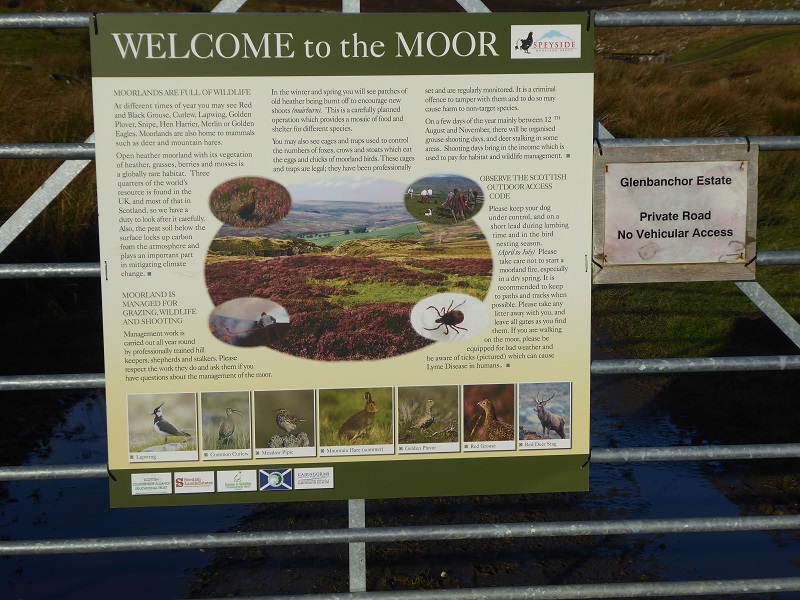
In the month or so since my post on grouse moor propaganda and our National Parks (see here), on two further outings I have come across further signs which undermine access rights and are contrary to the Scottish Outdoor Access Code. What this illustrates is that such signage is a far from isolated problem and one that should be of public concern given one of the four statutory duties of our two National Parks is to promote public enjoyment of the countryside and that as Access Authorities both have a statutory duty to uphold access rights. This post considers the issues further and makes some suggestions as to what our National Parks should be doing about this.
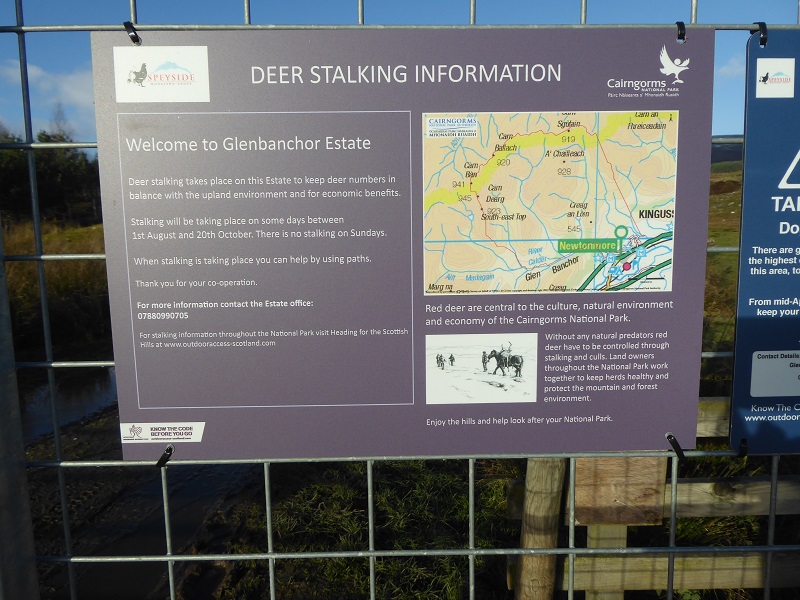
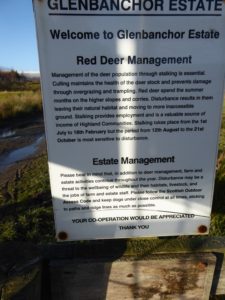
The walker intending to walk up the Strone track by Newtonmore is faced with no less than four different signs, all saying different things! The Welcome to the Moor signs recommends people keep to paths and tracks when possible, the large stalking sign recommends say that people can help by keeping to paths between 1st August and 20th October, while another sign (left) asks people to “stick to paths and ridgelines as much as possible”.
So, three contradictory messages – not a good start – but NONE of them reflect what was agreed in the Guidance for Land Managers on signage under the Scottish Outdoor Access Code (see here).
The SOAC Guidance for Land Managers starts with the statement “Simple, positive signs play an important role in responsible and effective access management”. Its neither simple nor effective to plaster a gate with lots of conflicting messages but the Cairngorms National Park Authority through endorsing two signs with different access advice has effectively endorsed this complex confusing approach.
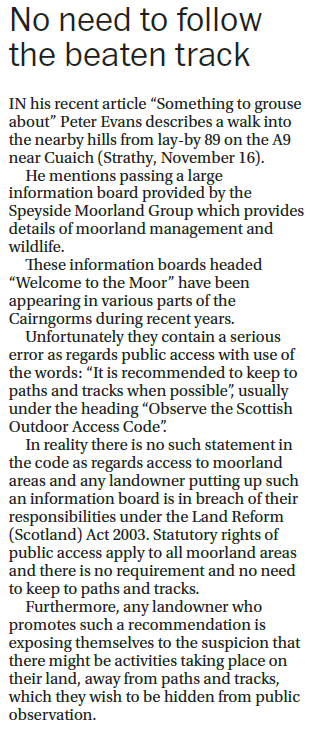
None of the messages however are compatible with the SOAC which NOWHERE tells people to keep to the path (see letter to Strathy right). Rather, its Guidance to Land Managers asks them to focus on informing walkers and other visitors about where estate management/shooting is taking place:
“Requests to avoid particular areas should
relate to specific days as indicated in the
Access Code. “
Requests and recommendations to people to keep to paths or tracks effectively undermine this as they are suggesting that it is better for people to keep out of vast areas of the countryside at ALL times.
In relation to stalking (there is no specific guidance for grouse moor management) the Code goes on to say:
“Requests should apply to the minimum necessary area. This will normally be the corrie or corries in which stalking is taking place, with the presumption that access can continue along adjacent ridges. If at all possible, the specified area should not include popular paths through glens or to major summits, such as the routes identified in the SMC guides to the Munros and Corbetts…………Conversely, signs which 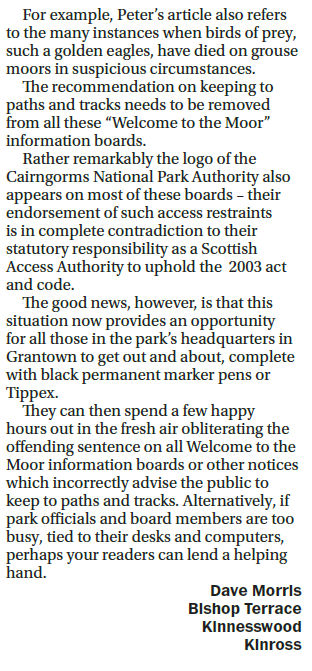 effectively prevent access to major summits (ie. Munros or Corbetts), or make general requests to avoid high ground, are not appropriate”.
effectively prevent access to major summits (ie. Munros or Corbetts), or make general requests to avoid high ground, are not appropriate”.
The logic also applies to moorland. Signs which tell people to avoid stepping onto moorland by keeping to paths or tracks are appropriate.
What the SOAC Guidance goes on to say is that where an estate is unable to provide specific information on where stalking is taking place, signs need to offer a number of option not all of which are about keeping to paths:
“Signs of this type could, for example, indicate to hillwalkers that “when stalking is taking place, you can help by:
- using paths;
- following ridges, and;
- following the main watercourse if you have to go through a corrie.”
One of the Strone signs half uses this guidance by referring to paths and ridgelines (not corries) but goes beyond it by asking people to “stick” to these routes.
So what happens when the path and ridge ends? Access rights do not terminate at the end or even the side of the path or track. The CNPA really needs to step in, sort this muddle out and ensure access signage in the National Park reflects what SOAC says..
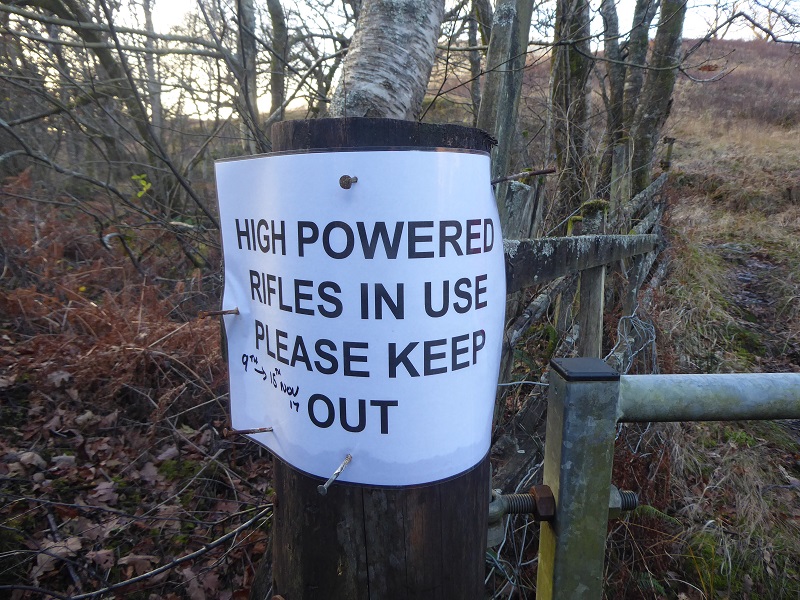
The signs in the Cairngorms National Park however are nothing as compared to those in the Loch Lomond and Trossachs National Park, a number of which have been featured on parkswatch (see here for example) and most of which have to the best of my knowledge not been removed despite being reported. I came across another such sign yesterday. The first underpass south of the Ardlui station says the next underpass should be used to access Ben Vorlich (sorry no photo of that sign) but when you get through that underpass you are greeted by the photo above. This type of signage was supposed to be abolished by the Land Reform Act (and I am only surprised that no-one has ripped it down – I would have done if I had not wanted to feature it here!).
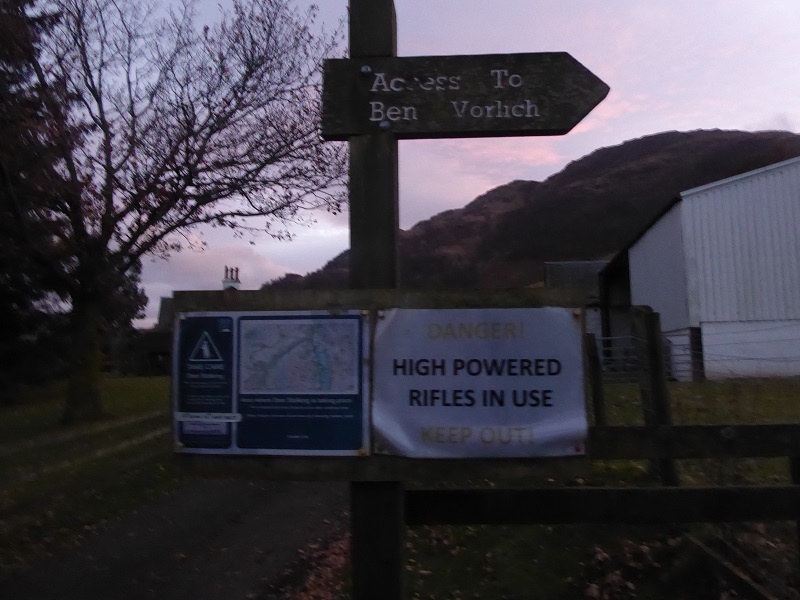
The sign is not an isolated mistake, above is the sign a friend and I came across on our return having walked down the fine bumpy ridge north east of Little Hills. I wonder if the National Park paid for the wooden access pointer sign and what they think about walkers now being told to keep out? The landowner has completely ignored access rights and the worrying thing is they appear to believe they can get away with it. (I will report these signs to the LLTNPA and ask them to ensure they are removed).
What needs to happen
Initially, the Land Reform Legislation had a very positive impact and a number of long-standing access issues (e.g. the barbed wire covered locked gate at the bridge over the River Etive and many anti-access signs were removed). However, what has since happened is that many access officer posts have been cut under austerity – so fewer and fewer people are being paid to uphold access rights – while landowners and our public agencies have started to ignore the legislation. There is a real risk now that access rights are undermined which is why I believe its particularly important our National Parks get it right.
I don’t believe that people visiting the countryside should tolerate signage that abuses rights and believe that, in the absence of effective action from our access authorities, people should consider taking direct action. Markers pens and tippex would be a start!
Our two National Park Authorities, however, need to make an explicit commitment to address these issues. I would like to see the LLTNPA in their new National Park Partnership Plan due to be discussed by their Board next Monday setting a target that NO signs contrary to the Land Reform Act should be evident in the National Park in two years time. That would focus staff on getting these signs removed instead of the current dithering.
Both our National Park also claim to be trying to agree estate management plans with landowners. An explicit part of every such plan should be access signage. Far better than an estate puts up no signs at all – as appears to be the case at Glen Feshie – than they are allowed to put up signage that undermines access rights.
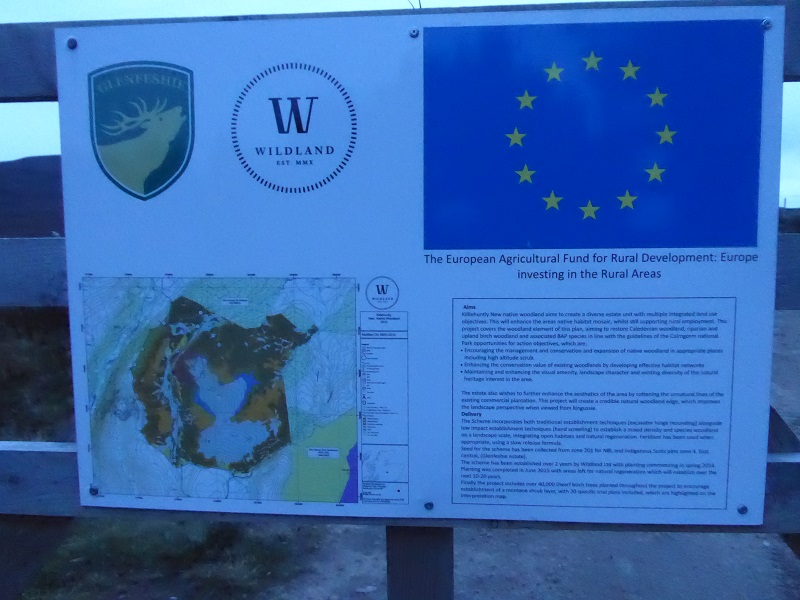
I have in the last month visited Glen Feshie estate twice and so far not seen a single access sign. People might ask how do you know you are welcome there? Having talked to Thomas McDonnell, the Conservation Manager there, I know people are welcomed by the estate and he wants to promote access. The attitudes of the estate are, however, as I think Thomas would acknowledge, irrelevant. You, I or anyone else has a statutory right of access to land in Scotland and I think most hillwalkers know this. They simply ignore unlawful signs. The problem is for the uninformed visitor who does not know their rights who comes across a sign which may start by saying “welcome” but whose content is then all about “NO” or which explicitly tries to tell people to keep out. Better there are no signs than signs like that.

I thought putting up a sign and/or fencing to prevent or deter anyone exercising their rights under the Land Reform Act is explicitly prohibited. Why doesn’t the Park Authority take a simple carrot and stick approach – by providing an example of best practice signage, and warning of what might constitute an illegal approach (which one would hope they’d follow up on). Has this been tried? There can’t be that many land owners in the Park – so communication wouldn’t be time consuming or costly…
Excellent question and one, one would have hoped, the Environment Minister would be asking our National Parks.
Because the CNPA appear to believe that the “overall effect” of the signs is positive, and prefer to “work with” the landowners. I think this means they are, or at least believe themselves to be, powerless against the landowners. Maybe more real support from the Government would help, but maybe also just getting rid of the nice men in suits at the top would help as well, given how chummy they are with the lairds.